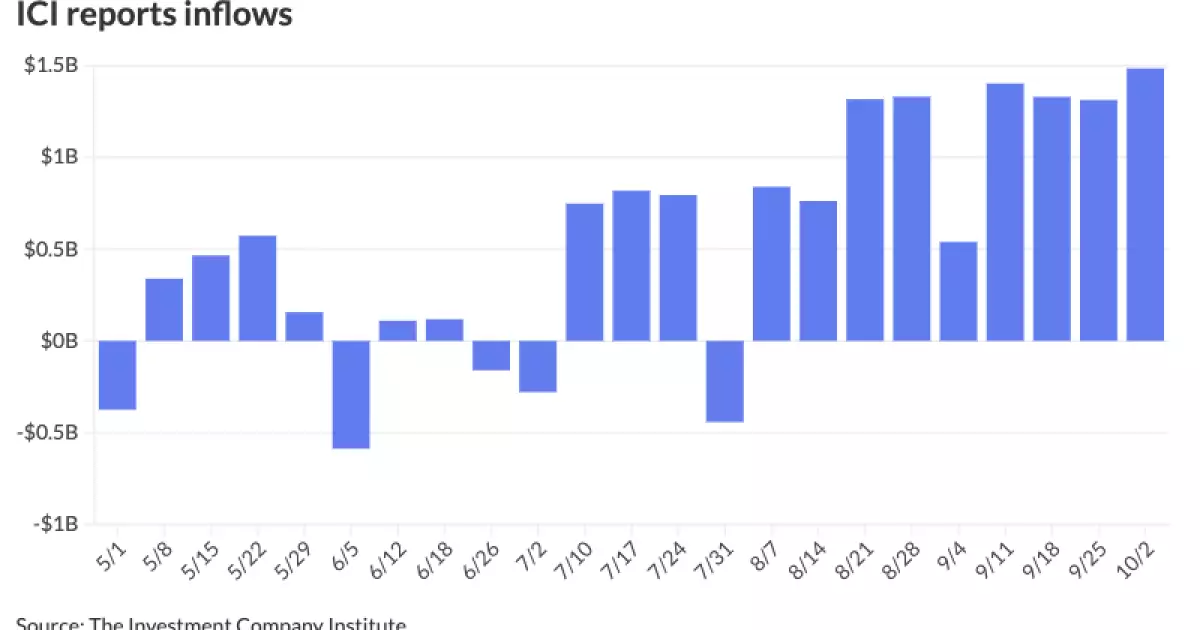The municipal bond market has recently experienced shifts that are critical for both current and prospective investors. With municipals showing a trend of weakness and U.S. Treasuries rising in yield, it is essential to dissect these movements to understand the broader implications for the financial markets as we enter the final quarter of the year. Over the last four trading sessions, the slight weakening in municipal bonds, juxtaposed against elevated gains in equities, raises questions about investor sentiment and market dynamics.
Recent data indicates a conservative rise in municipal yields, with adjustments reaching up to three basis points depending on the maturity. In contrast, U.S. Treasury yields have seen a notable increase of four to five basis points, notably driving the two-year Treasury yield above the 4% threshold—the first occurrence since late August. This reflects a growing trend where the ratio of municipal to Treasury yields is critical for investor decision-making. According to various market reports, the two-year municipal-to-Treasury ratio rests at 61%, with other maturities also reflecting a consistent theme of slight widening.
Such ratios showcase the relative attractiveness of municipal bonds, particularly as we evaluate supply dynamics against demand. It highlights a perspective where, despite slight yield increases, many investors still find value in the fixed-income sector, specifically within munis.
Market Influences and Supply Chain Dynamics
A significant aspect affecting the municipal landscape has been the marked $1.484 billion inflow into municipal bond mutual funds for the week ending October 2—an increase from prior figures. This continuous trend of inflows signifies a budding investor confidence, which has now persisted for nine weeks consecutively. Understanding the attributes behind this growth is essential; many factors contribute to such commitments, including higher potential returns and less anxiety surrounding monetary policy.
Jeff Lipton, a market strategist, notes that the landscape appears to be establishing a clearer direction for the fourth quarter of the year. With a substantial number of issuers pre-empting the election-related markets by front-loading their deals, an upward trend in new issuance has emerged. This move seems tactical, as it prepares issuers for the upcoming political landscape that may influence the fiscal environment.
Additionally, as the market diversifies its supply of new munis, recent trends suggest that we can expect continuing volumes above $10 billion in weekly supply, barring holiday or major economic event disruptions.
Market Demand: Seeking Value Amidst Fluctuations
Despite the uptick in municipal yields and a slightly expensive relative valuation, market experts suggest that investor demand remains robust. The combination of forthcoming reinvestment needs and attractive ratios indicates that opportunities for purchasing may appear soon, particularly as yields stabilize and potentially decline. As highlighted by Daryl Clements, a municipal portfolio manager, prospective investors may need to approach with caution; selectiveness plays a vital role as rising costs could hedge against opportunities for average returns.
Individual retail investors may find themselves with the advantage of taxable equivalent yield calculations, positioning them uniquely in this evolving space. Institutional classes, while drawn to relative value propositions, may also face pressures as they navigate a landscape of varying valuations.
As we examine the immediate future of the municipal bond market, certain high-profile issuances point to promising dynamics. For example, the Connecticut GOs recently priced for institutions observe significant cuts from retail pricing, reflecting investors’ willingness to adapt to shifting yield landscapes. Moreover, the New York State Housing Finance Agency noted strategic moves with considerable revenue bonds. Such deals demonstrate a more significant appetite for risk and yield optimization—both critical elements as investors re-evaluate their positions in a realm characterized by fluctuations.
The anticipation surrounding competitive tax obligations, particularly in states like Nevada, underscores broader themes evident in other markets. As project financing becomes a tactical maneuver ahead of potential political shifts, we witness a complex interplay between fiscal health and investment strategy across different sectors of the municipal bond market.
As the municipal bond market continues to navigate these intricate dynamics, it becomes paramount for all stakeholders—whether retail buyers, institutions, or analysts—to closely monitor yield movements and economic indicators. With an influx of inflows, ongoing tactical issuance, and the interplay of equity market gains, the municipal landscape presents an evolving picture that deserves careful consideration.
Investors must proceed with a strategic outlook, balancing the desire for immediate yield against the uncertainties of a shifting economic and political backdrop. The journey ahead in the fourth quarter promises not just complexity but also opportunity for those able to decipher the signals and adapt to the unfolding narrative of the municipal bond market.

